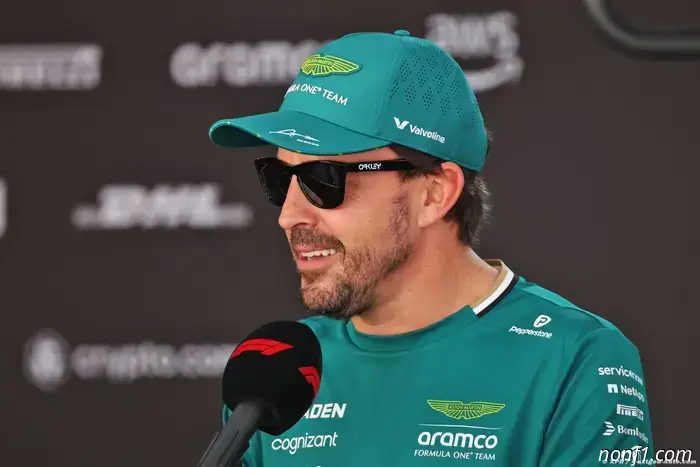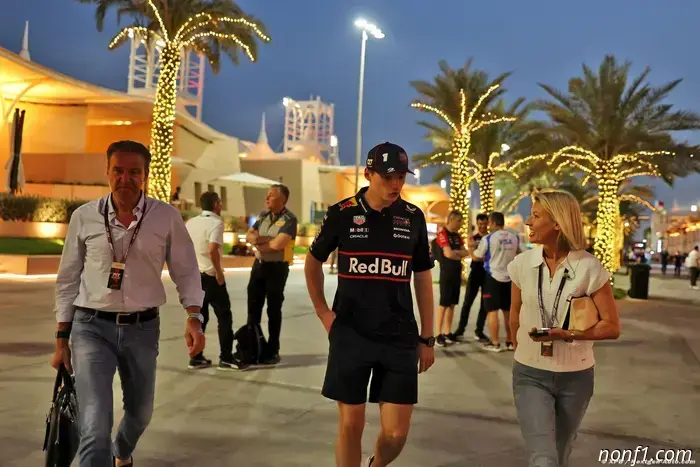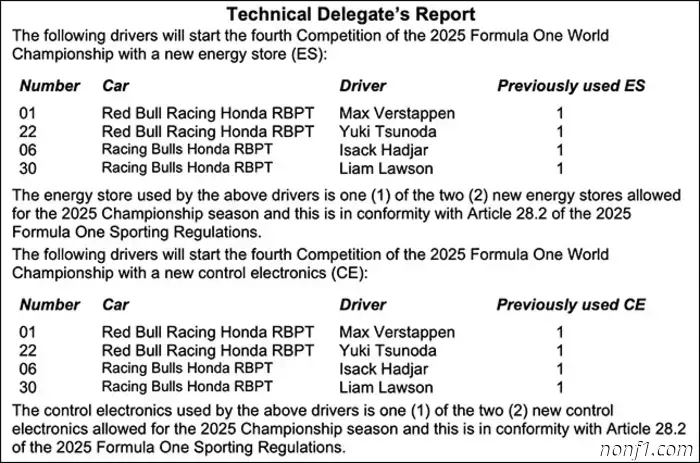
F1 talks about the convergence for 2026 and responds to the advocacy for V10 engines.
**Constructive Discussions with Stakeholders**
The FIA held a meeting in Bahrain today to talk about the current and future direction of Power Units in Formula 1. Chaired by FIA President Mohammed Ben Sulayem, alongside FOM CEO Stefano Domenicali and FIA Single-Seater Director Nikolas Tombazis, the gathering included representatives both in person and via videoconference from Audi, Ferrari, Ford, General Motors, Honda Racing, Mercedes, and Red Bull Powertrains.
Attendees included Gernot Döllner, CEO of Audi AG, Michael Moritz, COO of Sauber Holding AG, Frédéric Vasseur, Team Principal of Scuderia Ferrari HP, Mark Rushbrook, Global Director of Ford Performance, Mark Reuss, President of General Motors, Russ O’Blenes, CEO of GM Performance Power Units, Koji Watanabe, President of Honda Racing, Tetsushi Kakuda, Executive Chief Engineer at Honda Racing, Ola Källenius, Chairman and CEO of Mercedes-Benz Group, Toto Wolff, Team Principal and CEO of Mercedes AMG Petronas F1 Team, Christian Horner, Team Principal and CEO of Oracle Red Bull Racing, and Mattia Binotto, Chief Operating Officer and Chief Technical Officer of Stake F1 Team Kick Sauber.
In his opening remarks, the FIA President emphasized that the meeting aimed to find cost-effective solutions to ensure the long-term sustainability of both the sport and the Formula 1 business model.
The FIA has firmly committed to the 2026 Formula One regulations. The FIA technical team, along with various stakeholders, has dedicated substantial time to developing the 2026 hybrid Power Unit regulations featuring 100% sustainable fuel.
These upcoming regulations, which pertain to both Power Units and chassis, have attracted new Power Unit manufacturers to the sport, highlighting that the right technical path has been selected for the 2026 period. Minor adjustments and refinements are still being constructively discussed with all stakeholders.
In addition to the 2026 regulations, a variety of options and timelines for the future were reviewed, including the potential adoption of normally-aspirated engines powered by sustainable fuel. Key discussion points included:
— Reducing research and development costs for F1 powertrains
— Building resilience against fluctuations in the global economy
— Simplifying the complexity of Formula 1 Power Units
— Addressing sustainability, reducing weight concerning safety, performance, road car relevance, sound, and audience engagement
The FIA intends to consult with all stakeholders to reach decisions regarding future engine regulations to establish a path forward. The conclusions from today’s meeting included:
— A commitment from all participants to the 2026 regulations, looking ahead to exciting racing
— Agreement to continue discussions about the sport's future technical direction
— A recognition that some level of electrification will be part of future considerations
— The necessity for sustainable fuel standards
— Consideration of adjustments to financial regulations concerning Power Units as part of wider cost-cutting measures
— Priority on regulating these standards
Regardless of the chosen engine roadmap, the FIA supports the teams and Power Unit manufacturers in managing R&D costs, considering environmental impacts, and acting in the best interests of the sport and its fans.
Other articles
 Alonso desires 'reduced media' presence in Formula 1.
Formula 1 | Fernando Alonso has a straightforward desire regarding how to improve Formula 1 - he wants less media involvement. During the periods between the extremely fast yet routine (…)
Alonso desires 'reduced media' presence in Formula 1.
Formula 1 | Fernando Alonso has a straightforward desire regarding how to improve Formula 1 - he wants less media involvement. During the periods between the extremely fast yet routine (…)
 Verstappen is currently 'focused on enhancing the speed of my car.'
Formula 1 | Max Verstappen's 2025 season will proceed without interruption, despite the impending birth of his first child. Red Bull advisor Dr. Helmut Marko stated that (…)
Verstappen is currently 'focused on enhancing the speed of my car.'
Formula 1 | Max Verstappen's 2025 season will proceed without interruption, despite the impending birth of his first child. Red Bull advisor Dr. Helmut Marko stated that (…)
 Hamilton 'thrilled and relieved' about the new Ferrari floor.
Formula 1 | The decision is finalized - Ferrari's 2025 vehicle will include a new floor in Bahrain. The team from Maranello departed Suzuka last Sunday feeling disappointed (…)
Hamilton 'thrilled and relieved' about the new Ferrari floor.
Formula 1 | The decision is finalized - Ferrari's 2025 vehicle will include a new floor in Bahrain. The team from Maranello departed Suzuka last Sunday feeling disappointed (…)
 Albon: Sainz's struggles could help improve Williams' speed.
Formula 1 | Alex Albon has stood up for his Williams teammate regarding their difficulties in keeping pace so far in 2025. Many have expressed surprise that, following the switch from (...)
Albon: Sainz's struggles could help improve Williams' speed.
Formula 1 | Alex Albon has stood up for his Williams teammate regarding their difficulties in keeping pace so far in 2025. Many have expressed surprise that, following the switch from (...)
 The power plant elements were replaced in two teams
The FIA confirmed the replacement of the power plant elements on the Red Bull Racing and Racing Bulls cars.
The power plant elements were replaced in two teams
The FIA confirmed the replacement of the power plant elements on the Red Bull Racing and Racing Bulls cars.
 Alpine criticized for the way they handled Jack Doohan's situation.
Formula 1 | Two ex-Formula 1 drivers have criticized Alpine for placing excessive pressure on Jack Doohan at an early stage in his career. Even prior to the rookie (…)
Alpine criticized for the way they handled Jack Doohan's situation.
Formula 1 | Two ex-Formula 1 drivers have criticized Alpine for placing excessive pressure on Jack Doohan at an early stage in his career. Even prior to the rookie (…)
F1 talks about the convergence for 2026 and responds to the advocacy for V10 engines.
Formula 1 | Today, the FIA held a meeting in Bahrain to deliberate on the existing and future direction of Power Units in Formula 1. The meeting was led by the FIA (...)
